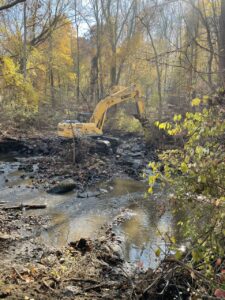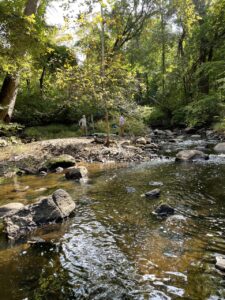
Volunteers from local conservation organizations recently planted dozens of trees and shrubs to help restore an area along a portion of the Furnace Brook in Cortlandt that had been obstructed by an obsolete dam.
The restoration work took place Oct. 8 — nearly a year after Riverkeeper partnered with the state to remove the dam, which was preventing aquatic life from thriving along the tributary.
The removal of the 5-foot-high, 75-foot-wide dam in Westchester County’s Oscawana Park has allowed life to return – blue crabs, freshwater mussels, creek chubs and other fish, according to Riverkeeper.
The waterway was known to Native Americans who lived in the area as the Jamawissa Creek, meaning “Place of Small Beaver.” In 1734 it was named Furnace Brook.
Read our interview with new Riverkeeper President Tracy Brown HERE

The new trees provided by the state Department of Environmental Conservation are intended to help stabilize the stream bank, prevent erosion and create shade that helps cool the water so that fish can thrive. They also help restore an area that was used to bring equipment in to remove the dam.
Dams block migratory species, like river herring and eel, that rely on tributaries as critical spawning grounds, according to Riverkeeper, the Ossining-based environmental organization.
About 1,600 dams, most of them obsolete and many hidden from view, fragment the rivers and streams of the Hudson Valley.
The October planting under the Trees for Tribs program was done by volunteers from Riverkeeper, Waterkeeper Alliance, Student Conservation Association.
Anyone who would like to receive info on dam removal, habitat restoration and volunteer opportunities can sign up for email updates at www.riverkeeper.org






